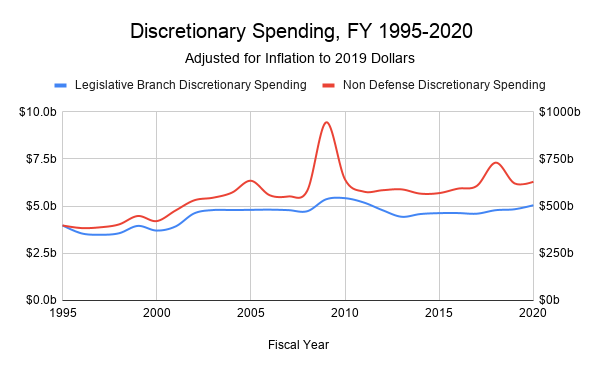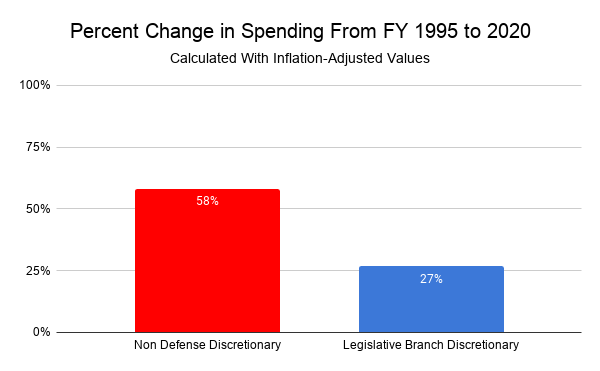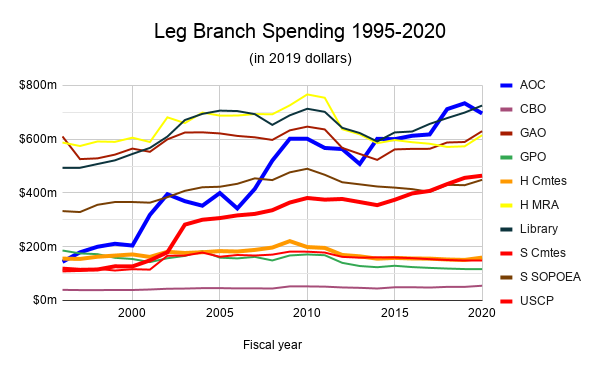The Legislative branch plays a central role in our democracy, but for decades Congress has systematically underfunded congressional operations as compared to the rest of government.
The chart below shows discretionary non-defense discretionary spending from 1995-2020 (in constant dollars). During that quarter-century, non-defense discretionary spending increased by 58%, but spending for the legislative branch increased only by 27%.





 Rule 19
Rule 19